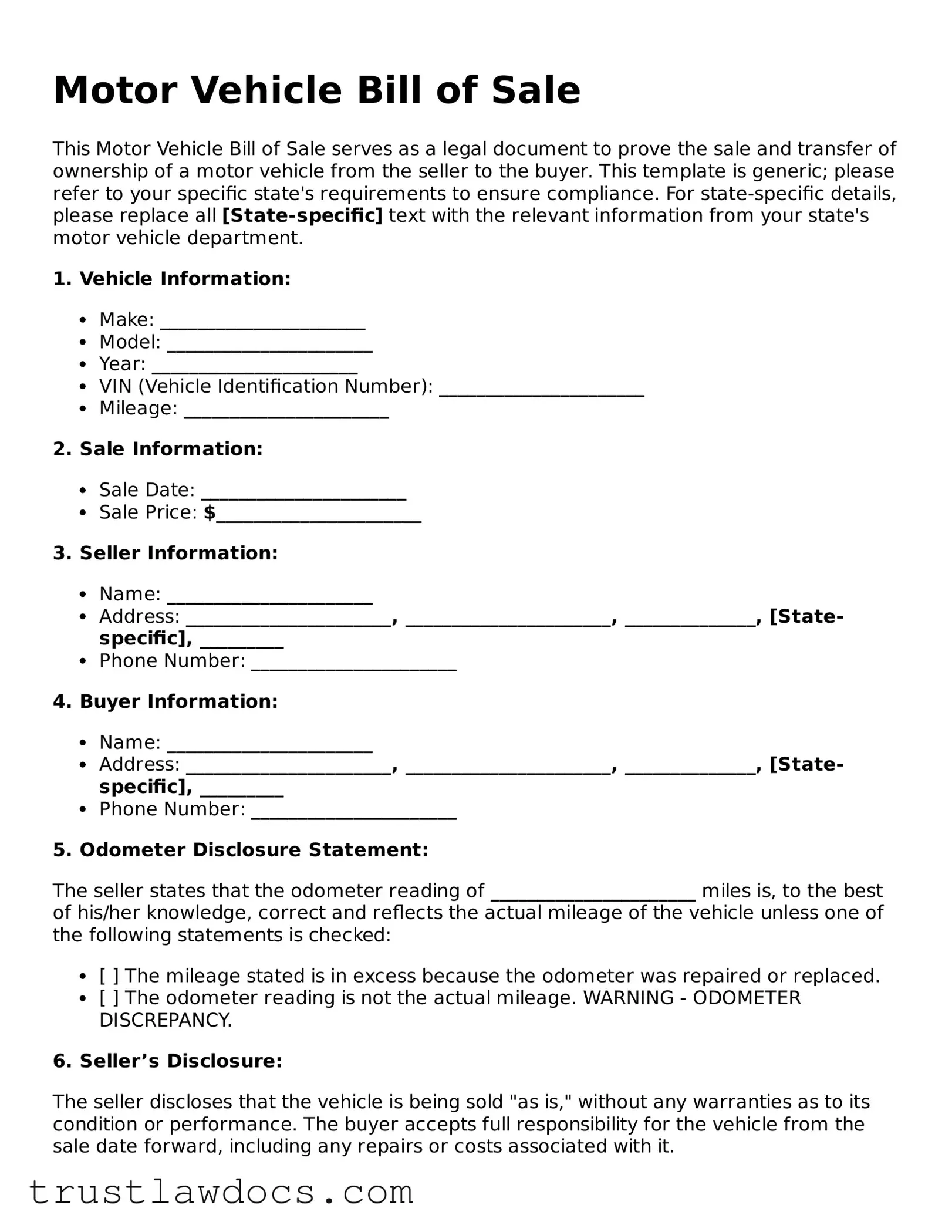What is a Motor Vehicle Bill of Sale?
A Motor Vehicle Bill of Sale is a legal document that records the transfer of ownership of a motor vehicle from one party to another. It serves as a receipt for the transaction and typically includes details such as the vehicle’s make, model, year, VIN (Vehicle Identification Number), the purchase price, and the names and signatures of the buyer and seller.
Why is a Motor Vehicle Bill of Sale important?
This document is important because it provides evidence of the purchase, which can protect both the buyer and the seller in the event of disputes. It is also a critical document for the registration and titling of the vehicle in the buyer's name by the relevant motor vehicle department.
Is a Motor Vehicle Bill of Sale required in all states?
Requirements can vary by state. Some states require a Motor Vehicle Bill of Sale for the registration of a vehicle, while others may not. It is always a good idea to check with your state’s motor vehicle department for specific requirements.
What information should be included in a Motor Vehicle Bill of Sale?
A comprehensive Motor Vehicle Bill of Sale should include the vehicle’s make, model, year, VIN, the purchase price, odometer reading at the time of sale, and the sale date. Additionally, the names, signatures of the buyer and seller, and possibly their addresses should also be included.
Does a Motor Vehicle Bill of Sale need to be notarized?
Whether notarization is required can vary from state to state. In some cases, having the document notarized can add an extra layer of legality and protection. Always check the requirements in your state.
Can a Motor Vehicle Bill of Sale be hand-written?
Yes, a Motor Vehicle Bill of Sale can be hand-written as long as it contains all the necessary information and is legible. However, to ensure clarity and prevent misunderstanding, a typed document is often recommended.
What should I do after receiving a Motor Vehicle Bill of Sale?
After receiving a Motor Vehicle Bill of Sale, the buyer should keep it in a safe place. It is an important document that they will need for vehicle registration and titling. The buyer should also use this document to check that the VIN on the vehicle matches the VIN on the bill of sale and any other documents.
Is a Bill of Sale the same as a title?
No, a Bill of Sale is not the same as a title. The title is an official document issued by the state that indicates the legal owner of the vehicle. A Bill of Sale, however, is a record of the transaction between the buyer and seller, but it does not prove ownership in and of itself.
Can a Bill of Sale be cancelled or changed after it's signed?
Once a Bill of Sale is signed, it is considered a binding agreement. Changes or cancellations can only be made if both the buyer and seller agree. Any changes should be documented, and in some cases, it might be simpler to create a new Bill of Sale reflecting the revised terms.
